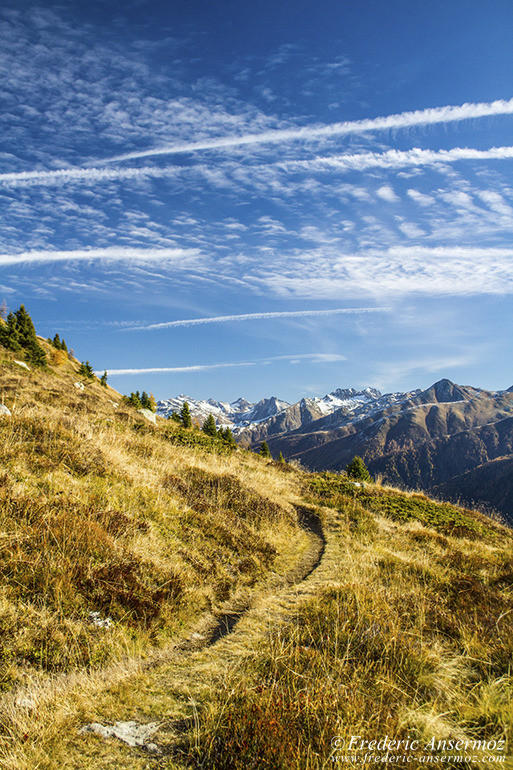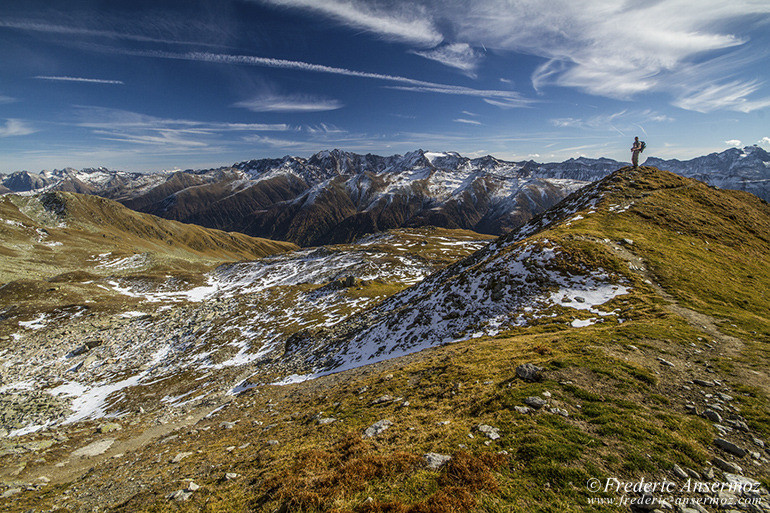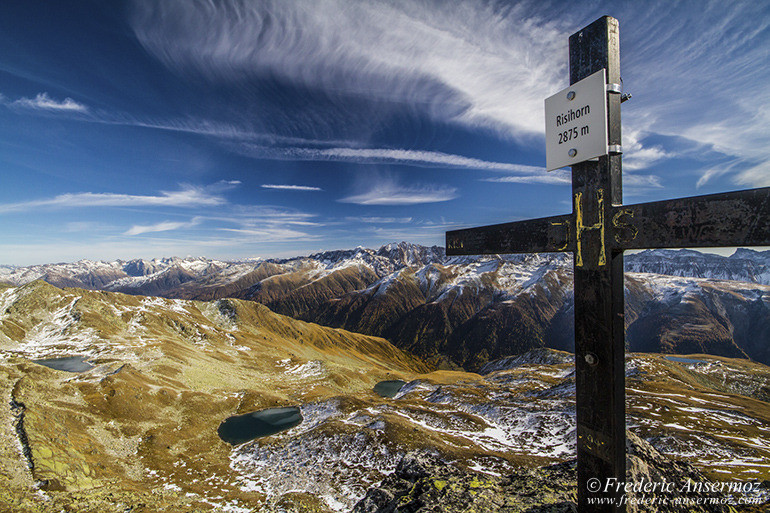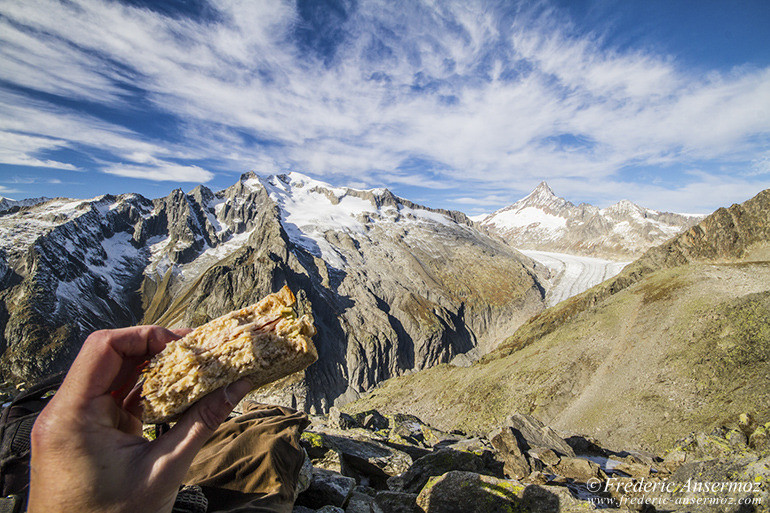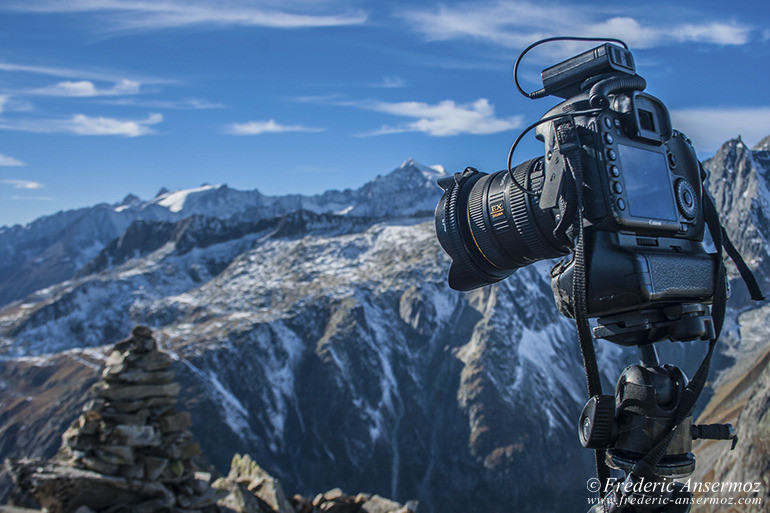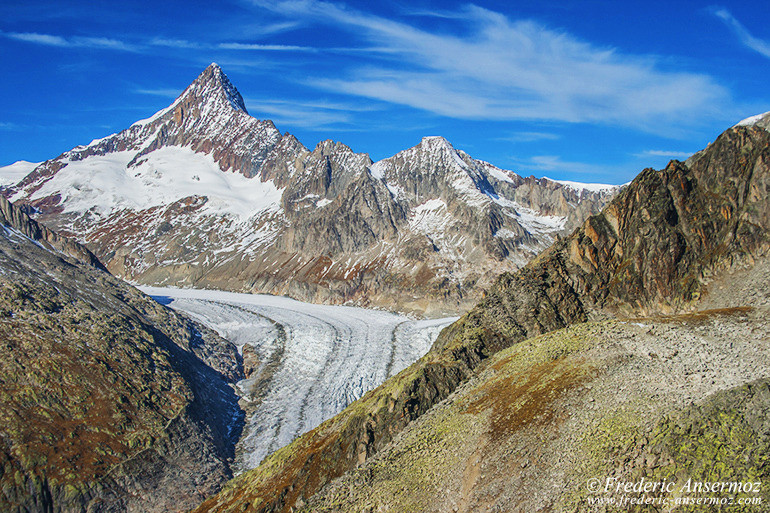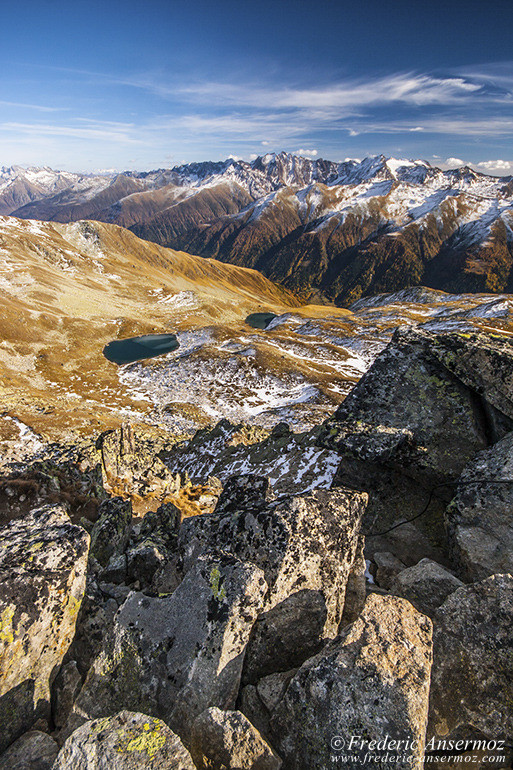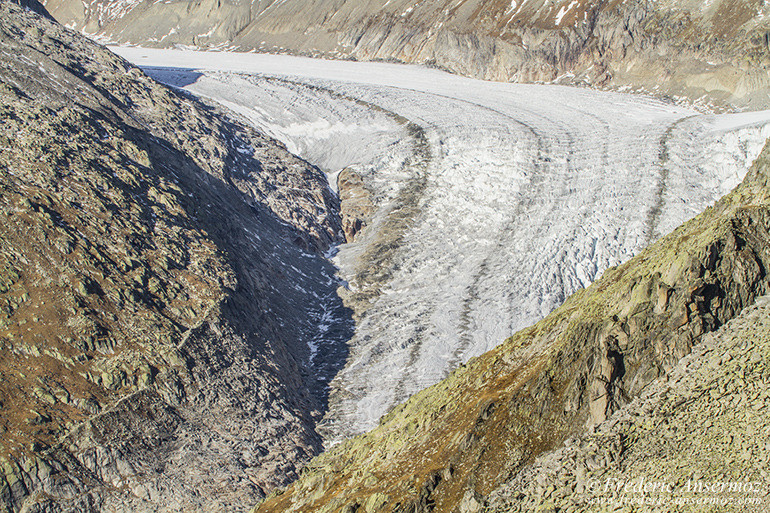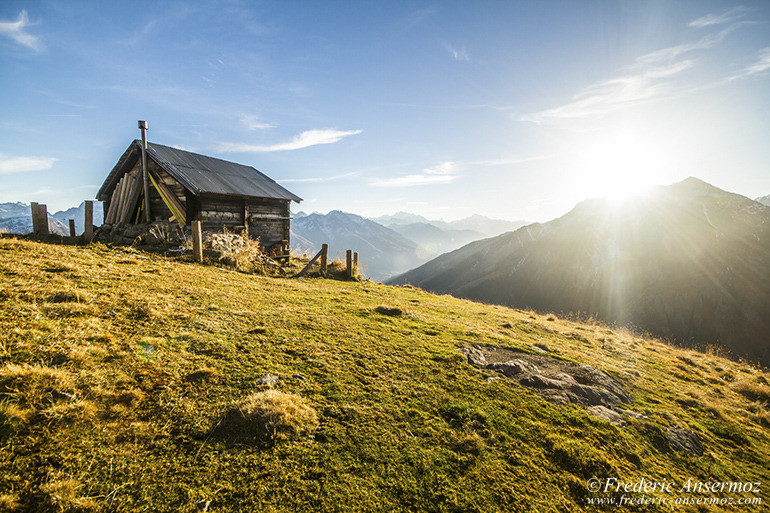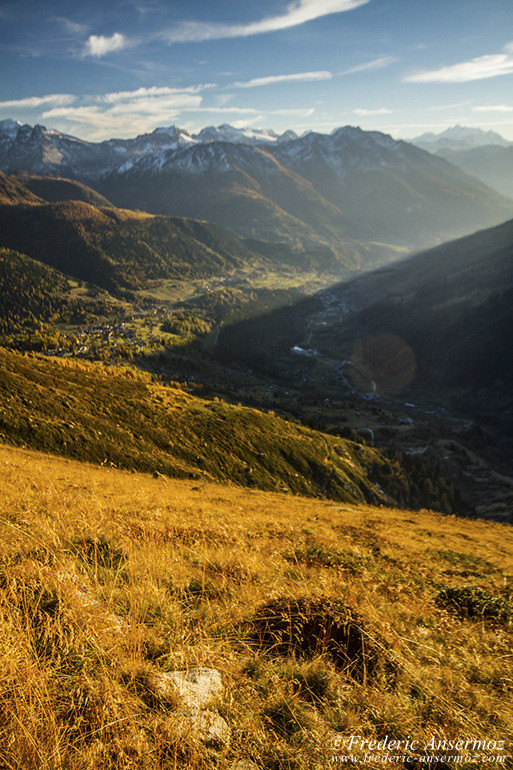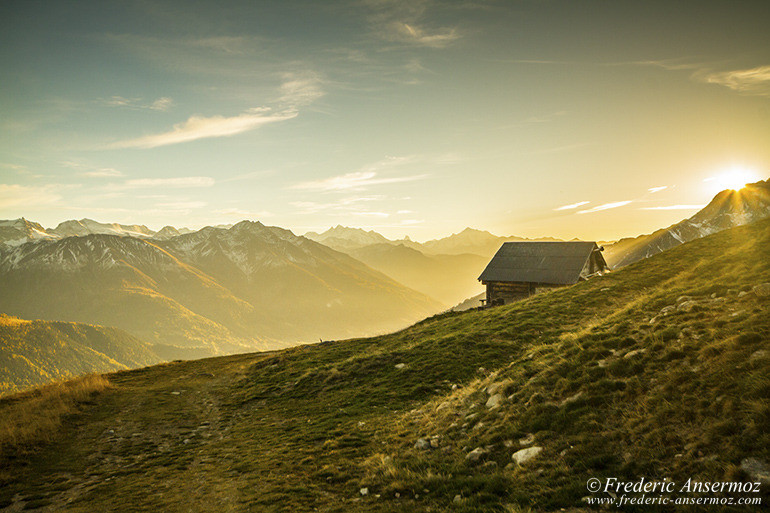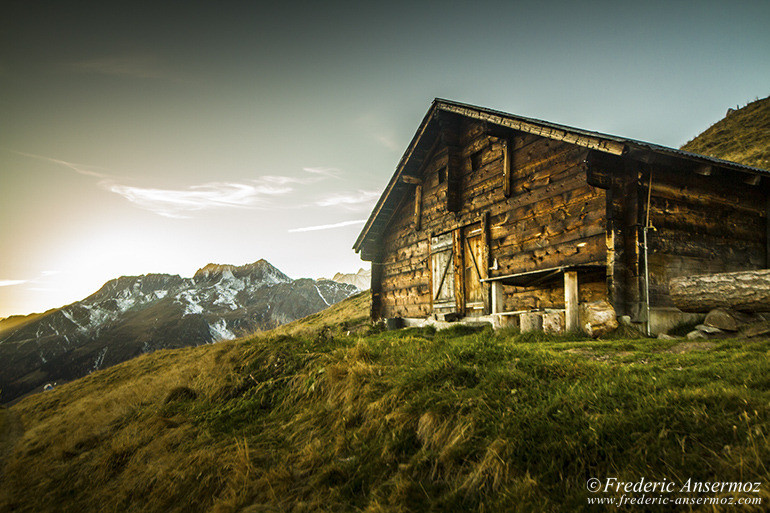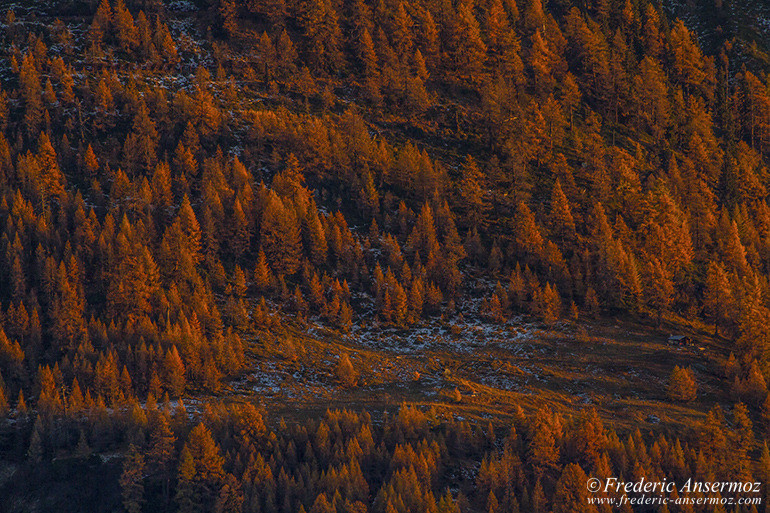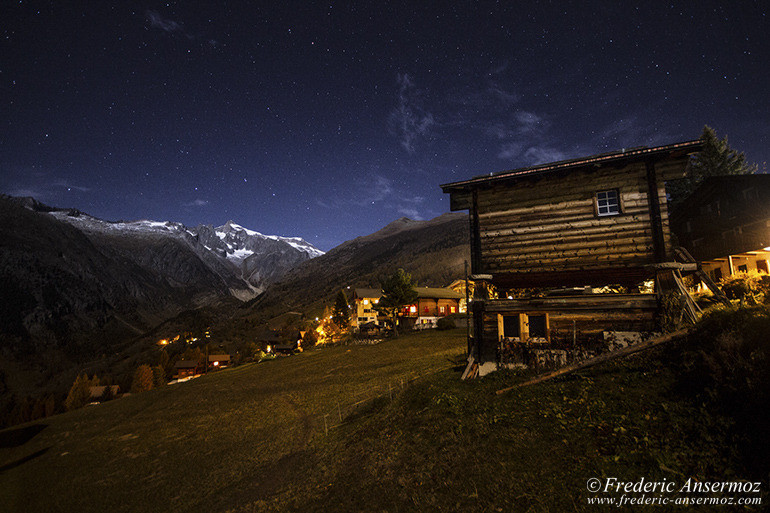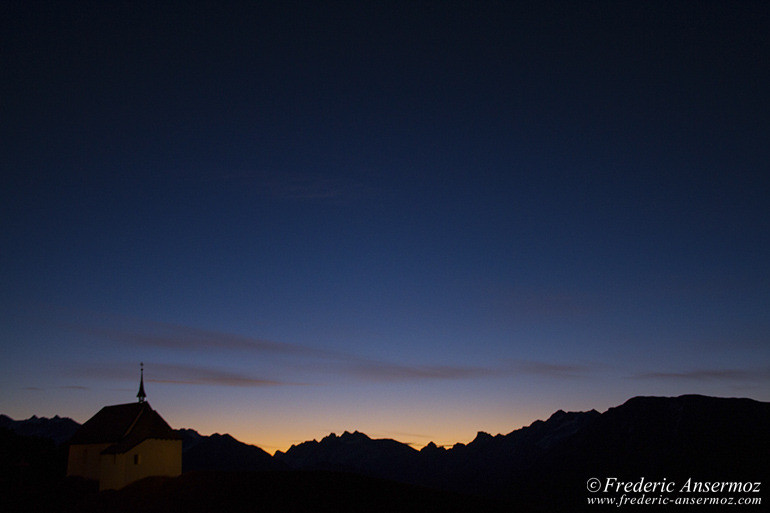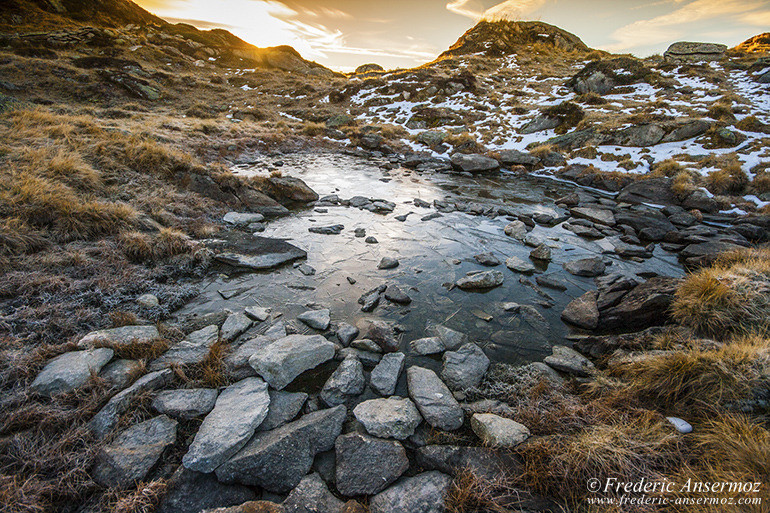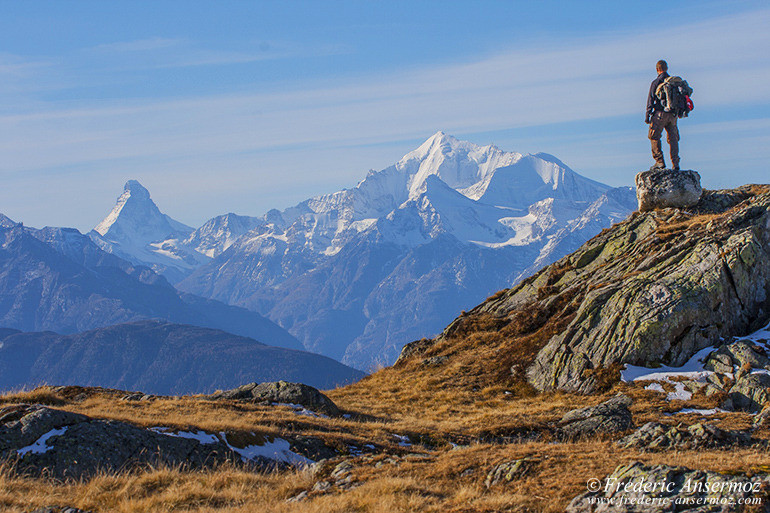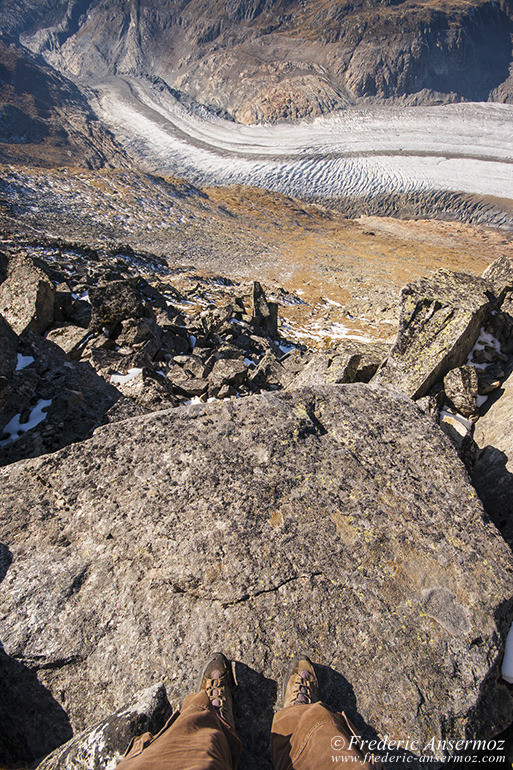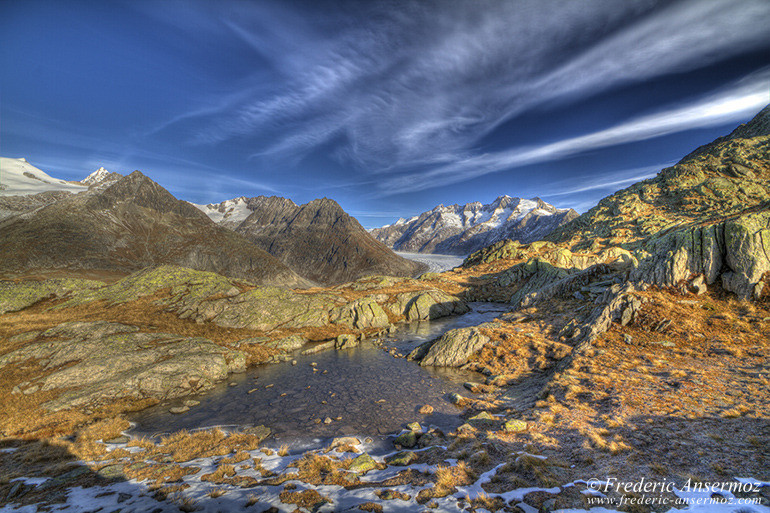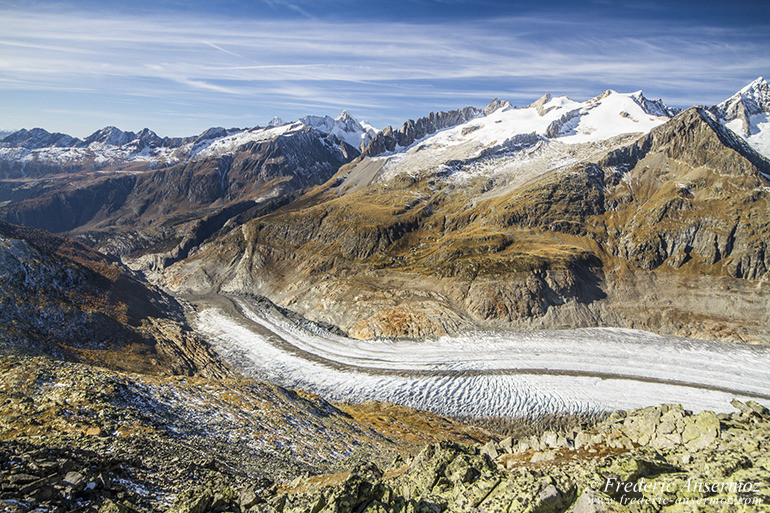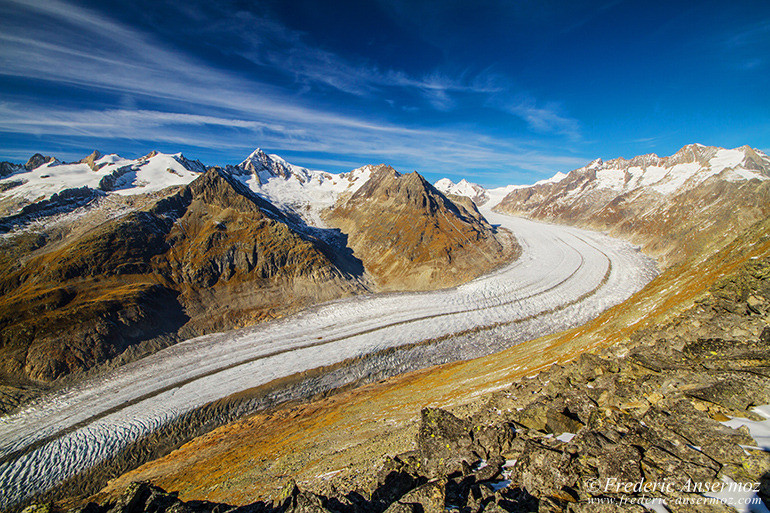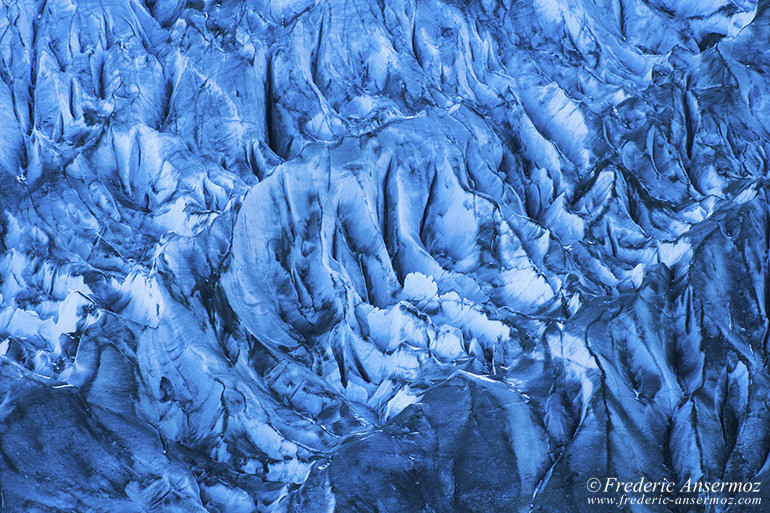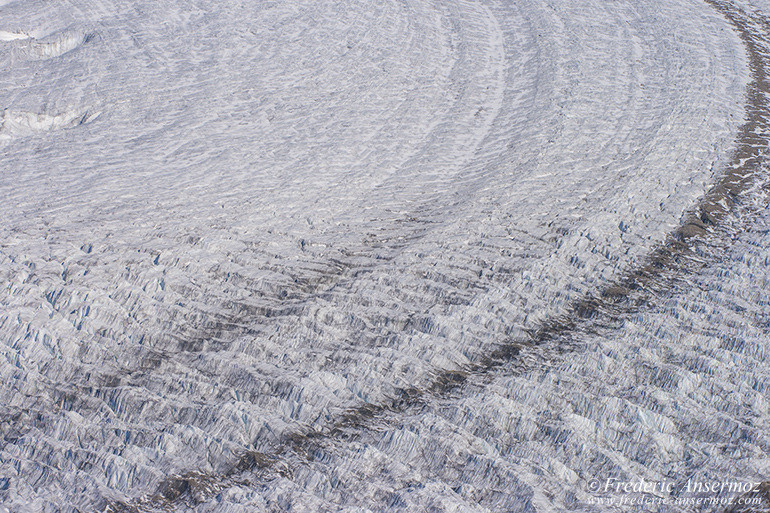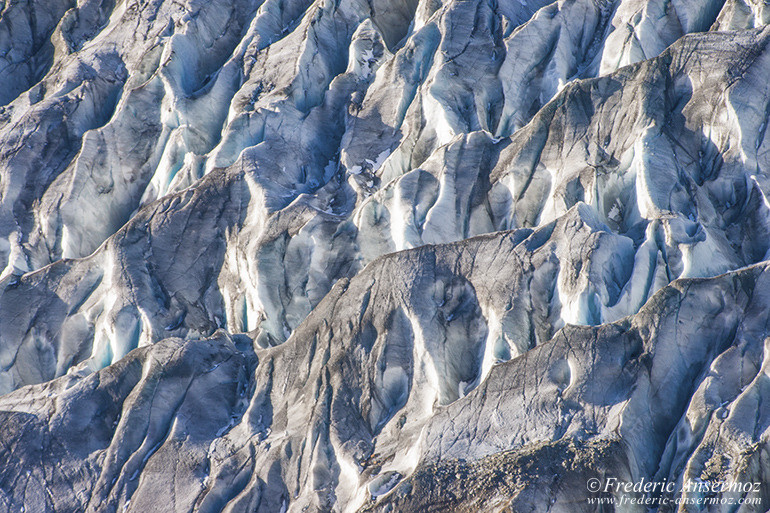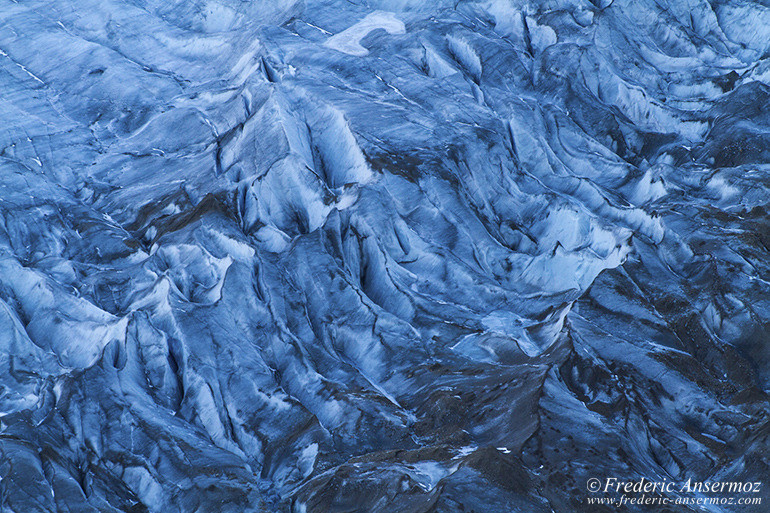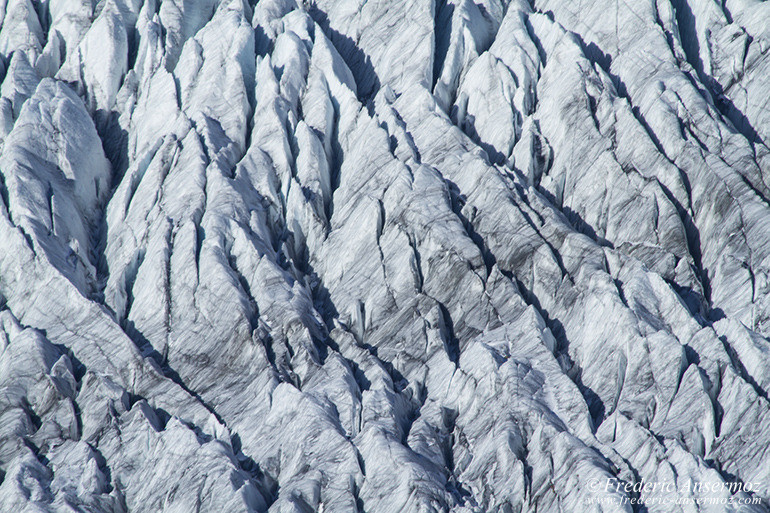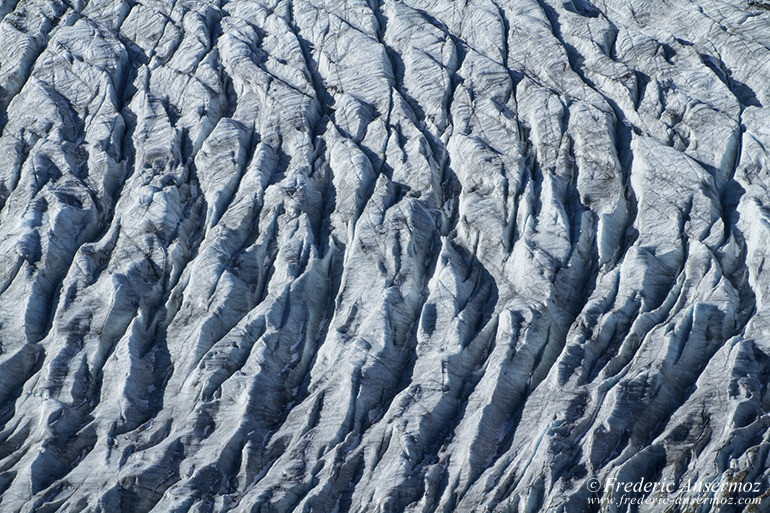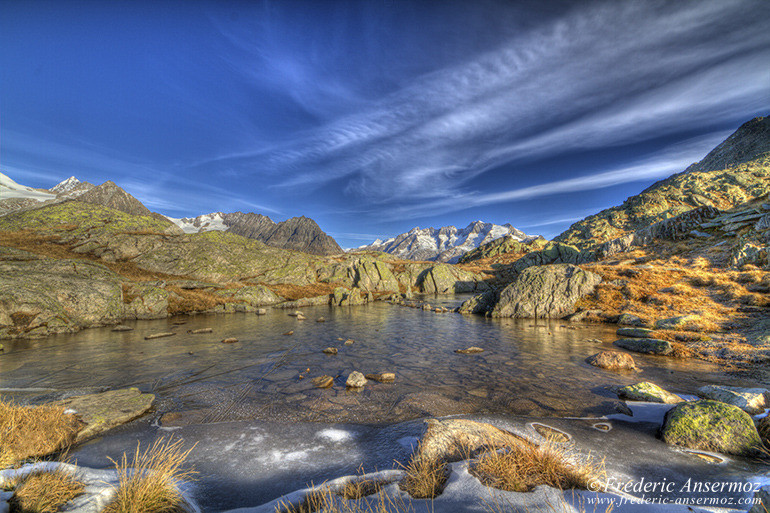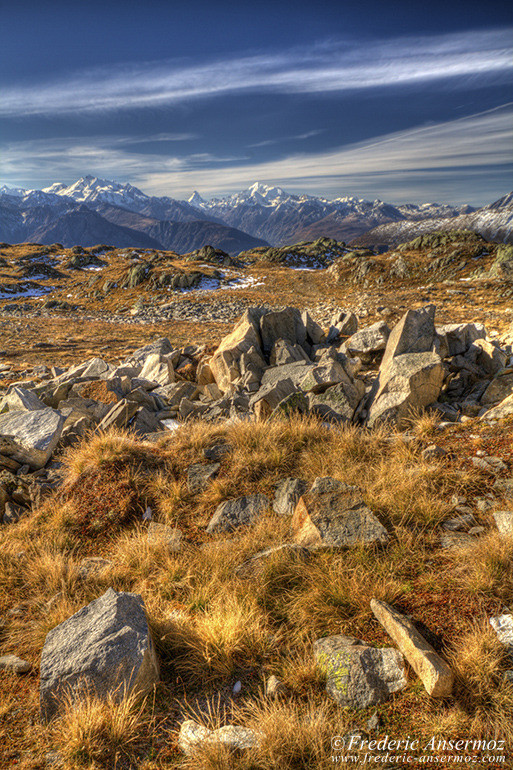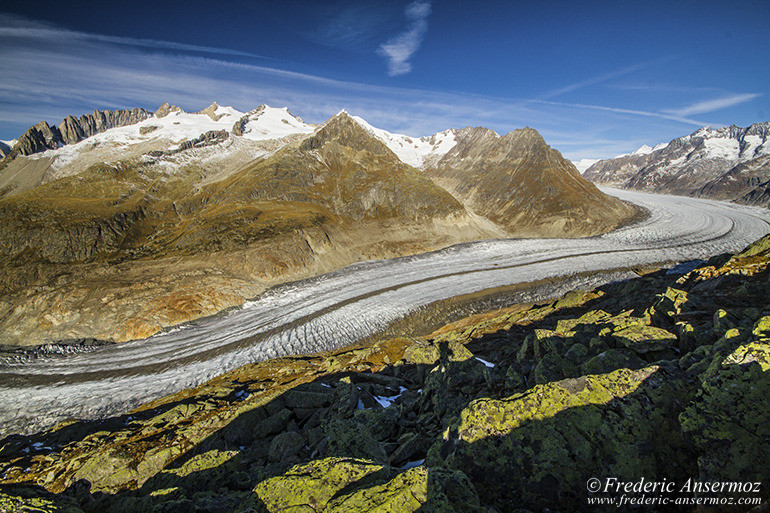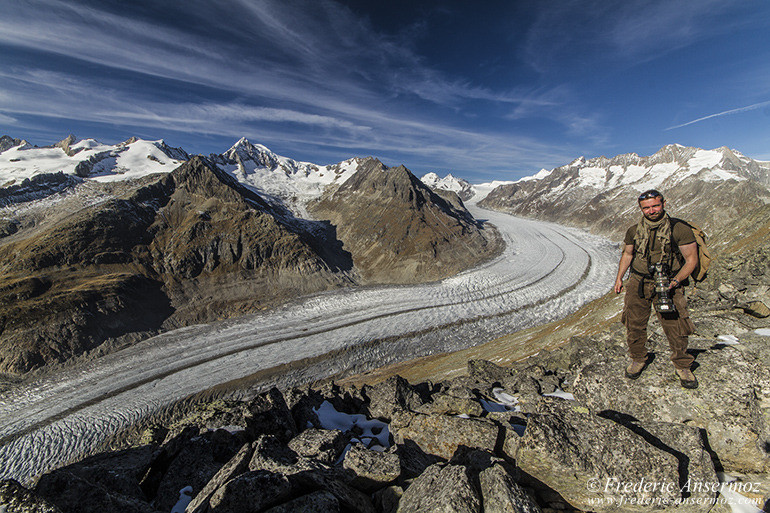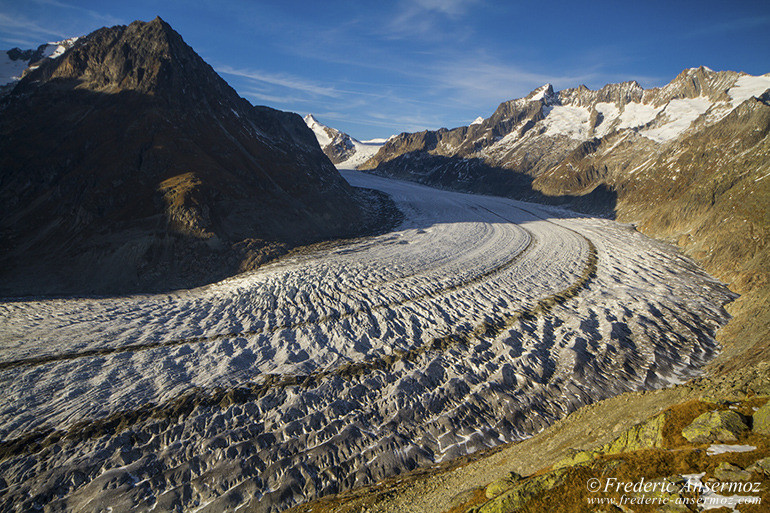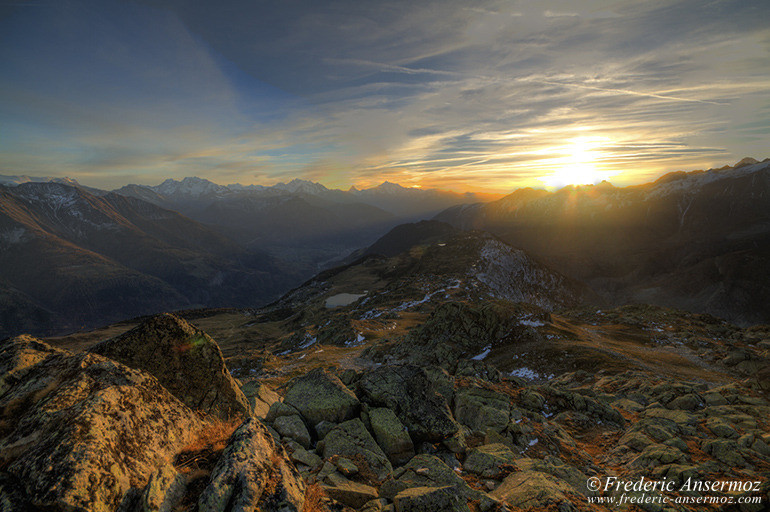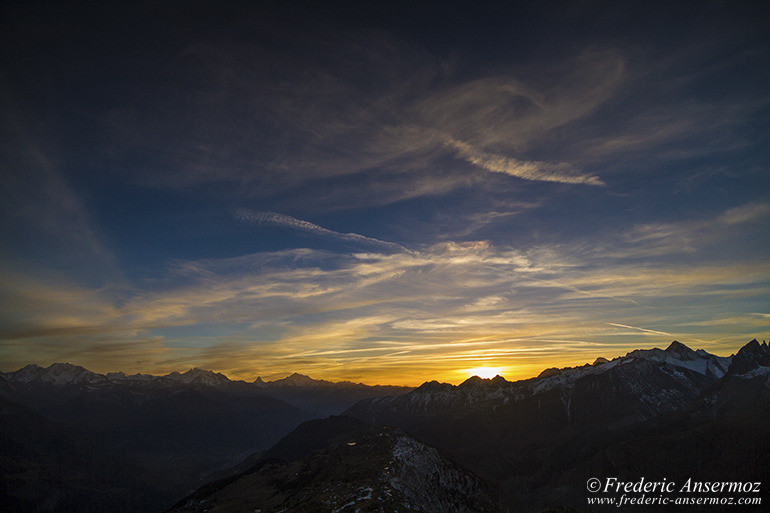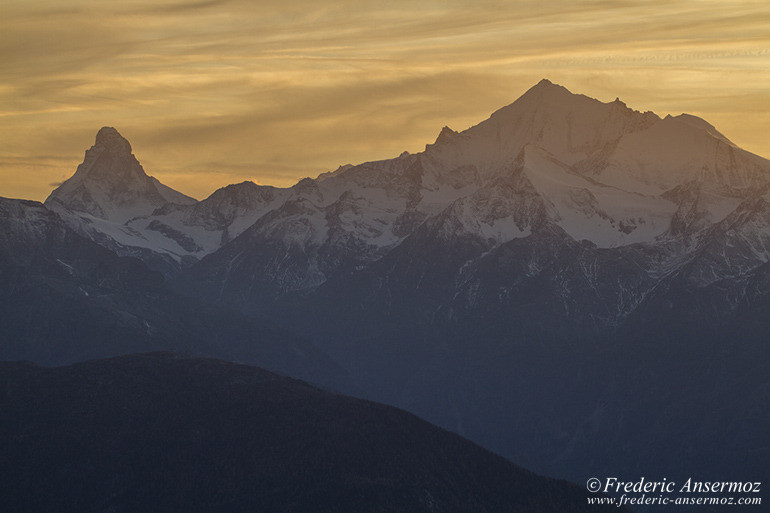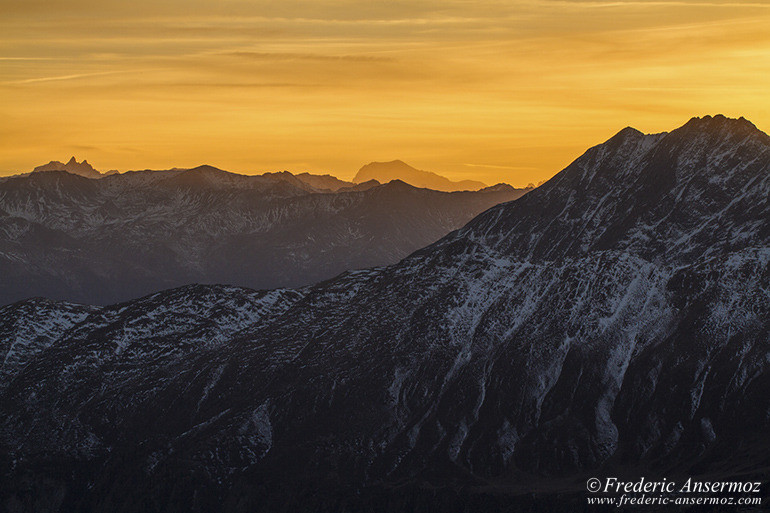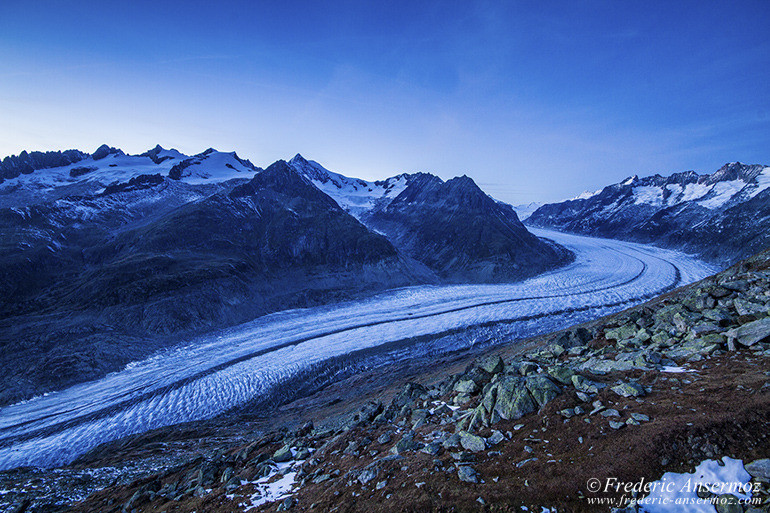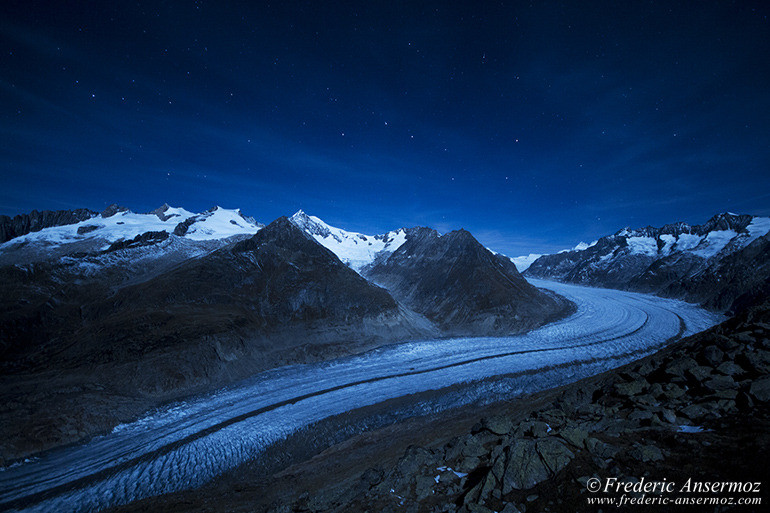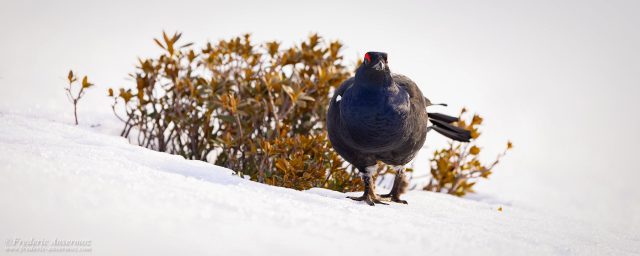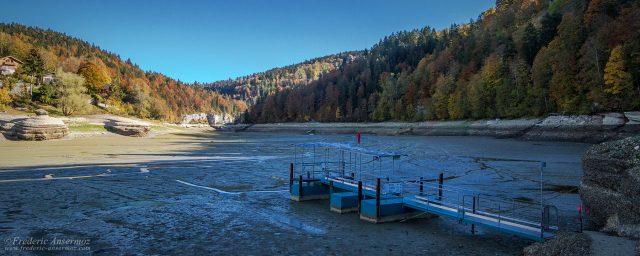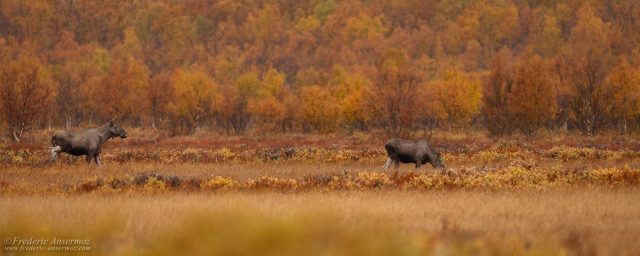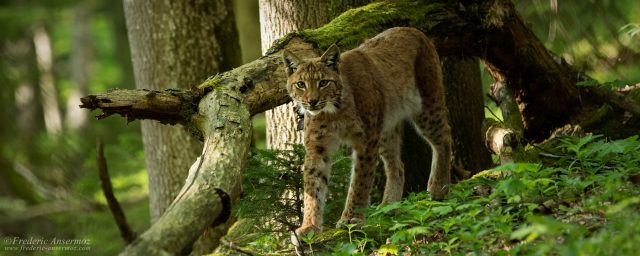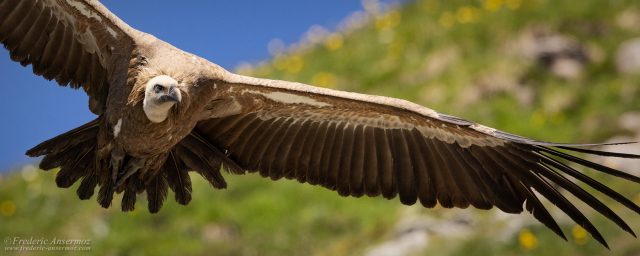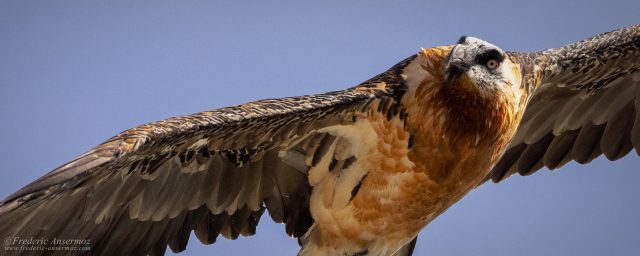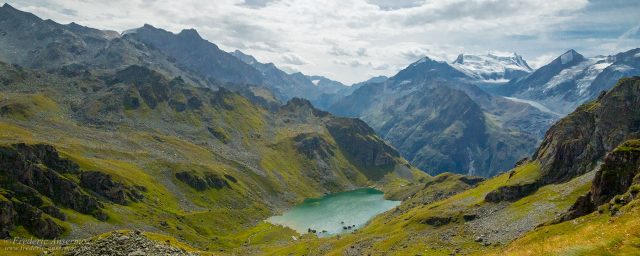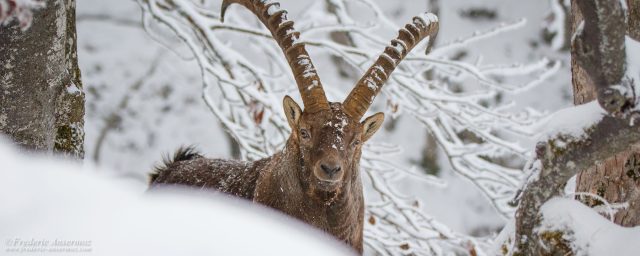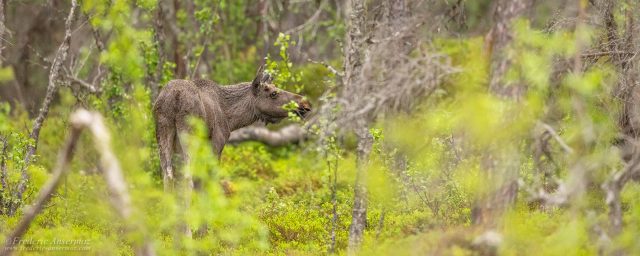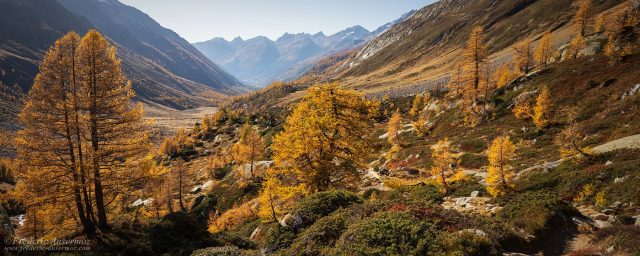The Aletsch Glacier and Fiescher Glacier in Switzerland, are two impressive glaciers in the eastern Bernese Alps in the Swiss canton of Valais.
The Aletsch Glacier (in German: Aletschgletscher) or Great Aletsch Glacier (in German: Grosser Aletschgletscher) is the largest glacier in the Alps (about 23 km (14 mi) long, covering more than 120 square kilometres (46 sq mi)).
The Fiescher Glacier (in German: Fieschergletscher) is located just beside the Aletsch Glacier. The starting point of the Fiescher Glacier is 4,000 m (13,000 ft) above sea level, on the eastern slope of the Fiescherhorn mountain.
The Jungfrau-Aletsch-Bietschhorn protected area (officially Swiss Alps Jungfrau-Aletsch-Bietschhorn) is located between the cantons of Berne and Valais. It is the first UNESCO World Natural Heritage site in the Alps, it was inscribed in 2001.
The following photos of the Aletsch Glacier and Fiescher Glacier in Switzerland, were taken during a complete weekend of hiking / photographing.
The first day, I hiked 10 hours around the Fiescher Glacier area, leaving forest and trees for rocks, alpine grassland and tundra vegetation, while climbing to the top of the Risihorn peak (2,876m).
It was pleasant to enjoy the view above the valley, reaching few mountain huts on the way to the top.
I spent the day there, but couldn’t clearly see the Fiescher Glacier from where I was. Sunset coming, I took some photographs of the sunlight on the mountain peaks, spruce and larch forests. It provides an incredible atmosphere.
The second day, I started my 14 hours day of hiking at 6am from Bettmeralp village, in order to take some pictures at sunrise. I walked and fast as I could to reach a view point on the Aletsch Glacier. Carrying all my equipment (cameras, tripods, etc ), plus food and clothes for the night, as my goal was to take some night shot of the glacier.
Frozen ponds among thousands of rocks, alpine grassland, snow, ice, I take pictures anywhere I lay my eyes on.
Enjoying the view on the Aletsch Glacier all day long, I reached the Bettmerhorn peak (2,858m) via a UNESCO classified trail, along the mountain ridges.
I took my lunch break up there, giving me an opportunity to rest a bit, before to start hiking again the afternoon.
Taking photos from the mountain top, I then went down to reach the Roti Chumme and enjoy the view from there.
Capturing with my camera the impressive seracs, ice cracks and crevasse in the Aletsch Glacier. I find the photos, abstract and artistic at the same time. I continued my exploration before sunset comes. Then, I went back higher on the mountain, but not on top, as I plan to stay till night there. As it’s my first time in this glacier area, I prefer to not to be on a rocky steep slope that I don’t know, at night time, when I have to go down, even with headlights.
I stayed 3 hours up there, waiting for more stars to come in the sky. It was a weird and intimate sensation to be alone up there, facing the Aletsch Glacier with the Moon lighting the entire scenery.
As clouds came faster than the stars, I prefered to start to hike down the mountain, a bit earlier than expected. Reaching my car around 9pm something.
I hope you enjoyed my photos of the Aletsch Glacier and Fiescher Glacier in Switzerland. Maybe it will motivate you to come to visit and respect this incredible Nature’s gift.
The whole area of the Aletsch Glacier, is considered to be the largest glaciated area in western Eurasia.
Except for the Finsteraarhorn mountain, all the highest summits of the Bernese Alps are located within the drainage basin of the Aletsch Glacier, with a culminating point of 4195m high, the Aletschhorn.
In the Jungfrau-Aletsch-Bietschhorn region, nine peaks are higher than 4,000 m.
Due to the Global warming, the glaciers retreat more and more, and at fast pace. The Grosser Aletsch Glacier, has retreated 2,600 m (8,500 ft) since 1880. This rate of retreat has also increased since 1980, with 30%, or 800 m (2,600 ft), of the total retreat occurring in the last 20% of the time period.
It’s our role to be more careful about what we are doing on the planet. Of course it’s easy to say that it’s only the big industrial companies that are responsible for these disastrous results. Sure they have their part of responsability, no doubt. But I think that is also our responsability, as individuals, to act better in our everyday life, in order to bring small changes. As millions of small changes can make big ones.

